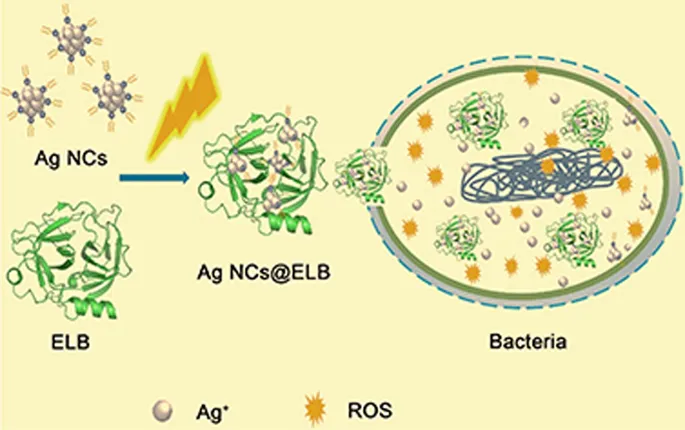
王子平博士在Nano Research(影响因子:8.515)上发表题为“Embedding ultrasmall Ag nanoclusters in Luria-Bertani extract via light irradiation for enhanced antibacterial activity”的工作。
Embedding ultrasmall Ag nanoclusters in Luria-Bertani extract via light irradiation for enhanced antibacterial activity
Ziping Wang, Yushuang Fang, Xianfeng Zhou, Zhibo Li, Haiguang Zhu, Fanglin Du, Xun Yuan*, Qiaofeng Yao* & Jianping Xie*
Abstract
Ultrasmall silver nanoclusters (Ag NCs) with rich surface chemistry and good biocompatibility are promising in antibacterial application, however, further development of Ag NCs for practical settings has been constrained by their relatively weak antibacterial activity. Using the nutritionally-rich medium for bacteria (e.g., Luria-Bertani (LB) medium) to coat active Ag NCs could further improve their antibacterial activity. Here, we provide a delicate design of a highly efficient Ag NCs@ELB antibacterial agent (ELB denotes the extract of LB medium) by anchoring Ag NCs inside the ELB species via light irradiation. The as-designed Ag NCs with bacterium-favored nutrients on the surface can be easily swallowed by the bacteria, boosting the production of the intracellular reactive oxygen species (ROS, about 2-fold of that in the pristine Ag NCs). Subsequently, a higher concentration of ROS generated in Ag NCs@ELB leads to enhanced antibacterial activity, and enables to reduce the colony forming units (CFU) of both gram-positive and gram-negative bacteria with 3–4 orders of magnitude less than that treated with the pristine Ag NCs. In addition, the Ag NCs@ELB also shows good biocompatibility. This study suggests that surface engineering of active species (e.g., Ag NCs) with nutritionally-rich medium of the bacteria is an efficient way to improve their antibacterial activity.

